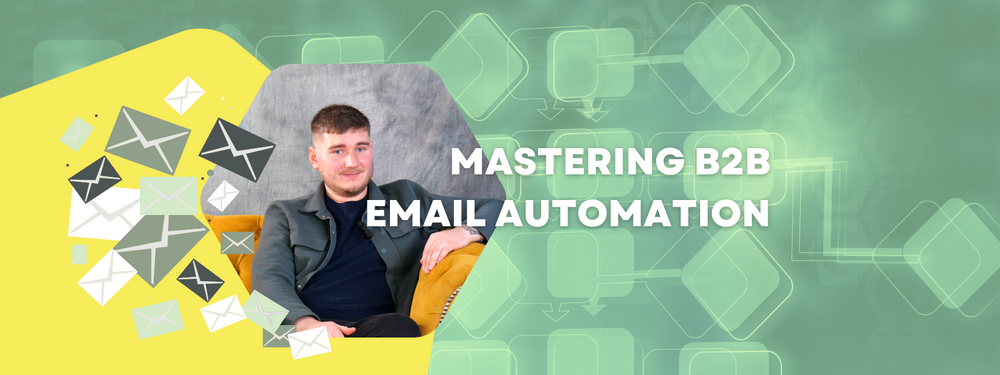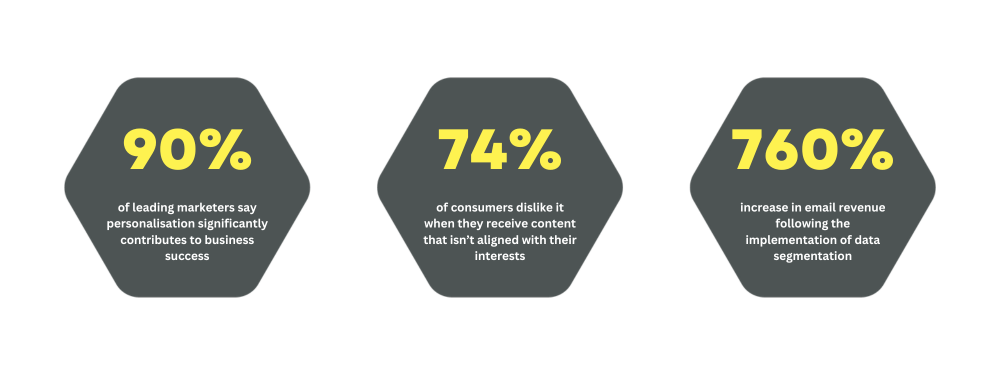Five Marketing Predictions for 2025
Jan 2, 2025By this point, most marketers have become accustomed to the never ending whirlwind of change and evolution in the digital…

By Josh Locke – Content Manager & Experienced Email Marketing Specialist at B2B Digital Marketing Agency Extramile Digital
Email marketing has evolved. Gone are the days when you could export a list from your CRM, upload it into Mailchimp, and send out one email campaign to your entire audience. The businesses still doing this are missing out on a serious amount of untapped potential and should consider implementing an email automation strategy.

Most CRM systems now connect directly to email systems or tools like Zapier can be used to bridge the gap, allowing businesses to create more personalised customer experiences. According to Google, 90% of leading marketers say personalisation significantly contributes to business profitability. Just because you’re marketing to another business doesn’t mean you shouldn’t be utilising your data to be more personable with your B2B email marketing.

Before you even think about sending an email, the first step is to work on your CRM. This is usually managed on systems like HubSpot, Oracle, Zoho, and Pipedrive or could be custom-built. You must ensure you have consistently formatted data, valid email addresses, and all the additional fields you need to serve your automations. The information on your CRM can be used as triggers to fire automated emails to your customers.
New customer/subscriber welcome
When a new customer signs up with your business or subscribes to your email list, send them a welcome email.
Quote/service/order confirmation
When a service or product is purchased, email your customer with their order details for their records. If you have a ‘request a quote’ form, send an automated email to tell the customer you’ve received their quote and will respond promptly.
Order status update
If you sell any product requiring manufacturing and shipping, keep the customer informed of every step of the journey. This gives them peace of mind and allows them to plan for arrival.
Quote expiry email
A week after sending a quote, if you’ve had no conversion, send a reminder with a link to the original quote. After two weeks, you could send another reminder offering a discount on their quote.
Upcoming service/event/booking reminder
Keep in touch with your customers in the lead-up to an event or booking to reduce the potential for no-shows. These emails can also help them appropriately prepare for any purchased service.
Review your experience
Building positive Google reviews is a great way to improve your organic business. Most users won’t choose to work with a business with less than four stars.
Loyalty bonus
Reward your loyal customers. This is so much easier than trying to win them back. Give them a reason to stay subscribed and make them feel like VIPs.
Rekindle lost leads/customers
If a certain amount of time has passed since a business last placed an order with you, send them an offer they can’t refuse.
Product/service recommendations
This could be based on a previous purchase or if they visit a specific page on your website. If a business was looking into one of your services but didn’t enquire, you could send them an email offering a free consultation.
When it comes to automation, the structure of your journeys and the variety of journeys you create are unique to every business. But here are some general tips to get the most out of your automated email marketing.
Strategy
Before you create any automations, outline your plan. What do you want to achieve? How are you going to accomplish that? Ask yourself ‘Why?’ and ensure you properly consider your answer.
Your strategy needs to be straightforward to implement and has clear KPIs set out that will allow you to measure the success of your automations. Planning your automation roadmap before you start can create more efficient automations that drive you towards your goal.
Testing
Before switching your automation live, I can’t stress this enough: you need to test every possible journey path and ensure the correct emails are firing at the proper time. This also includes doing quality checks on your email content.
Even in the B2B world, 41% of emails are now opened on mobile, and around 50% of Apple users operate their phones in dark mode. Use a tool like Litmus to analyse your email content and optimise it for every subscriber.
Timing
Ensure the triggers and wait times you use in your automation allow for precise sending. For example, you don’t want to send an email asking for a review of a product/service that has not been delivered. You also want to make sure automations don’t fire overnight. Set send times during working hours.
Tagging
Automations allow your customer base to be managed almost autonomously once they’re up and running, other than checking reports and completing optimisations. But it’s difficult to have full visibility of what’s happening at a granular level.
Using tagging, you can apply a tag to a data record if they perform a certain action or reach a certain point in the automation journey. For example, if a lead has enquired but not purchased in three months, they could be tagged as a ‘prospect’. You could then have a separate automation to trigger when the tag ‘prospect’ is applied, which will attempt to re-engage the lead with an exclusive offer.
Triggers
Most email marketers will need to seek out a trusted developer to help maximise automation, especially if you’re using a custom-built CRM or have a complex e-commerce website. To provide an experience with hyper-personalisation, you need to think beyond “Hello *Insert First Name*.
You need to set up triggers on the website that can send fully unique emails to a subscriber based on their previous purchases or bookings. Suppose you’re a B2B travel company with a customer who frequently books corporate travel to New York. You can enhance their experience and possibly upsell add-ons by sending automated emails that strictly refer to New York. Example: “Upgrade to First Class on your upcoming flight to New York, and you’ll receive 20% off!”
Content
Automated emails need to be brief with one clear call to action. You’ll provide a much more positive user experience if you don’t overcrowd these emails, even if this means breaking one email down into two or three spread across the week. Make sure you have a call to action above the fold on both desktop and mobile, even if this means having one at the top and bottom of your email.
Experiment
If you’re starting from scratch, then this is your chance to be creative and try some new ways of nurturing your customers and leads. If you’re not confident, speak to a B2B email marketing agency like Extramile Digital, which can offer creative and strategic consultancy or full B2B email marketing management.
AI is already creeping into our everyday lives in more ways than we realise. 38% of marketers use AI to generate images and text for emails, but it’s already used by some businesses like Starbucks to create hyper-personalised emails. As the technology becomes more widely accessible and easier to implement, we could see it being used to take email automation to the next level in the B2B sector.
The average ROI for email marketing is around £40 back for every £1 spent. Email marketing is a cheap tool that just requires time and expert care. If you’d like to learn more about B2B email automation or B2B email marketing and how we can help your business, contact Extramile today.

By this point, most marketers have become accustomed to the never ending whirlwind of change and evolution in the digital…

Case studies are a great tool for social media marketing. They showcase real results, build trust with potential customers and…

PPC advertising is one of the most effective ways to put your business in front of the right audience at…

Email marketing continues to be a vital tool for businesses to connect with their audiences, but the landscape in 2025…